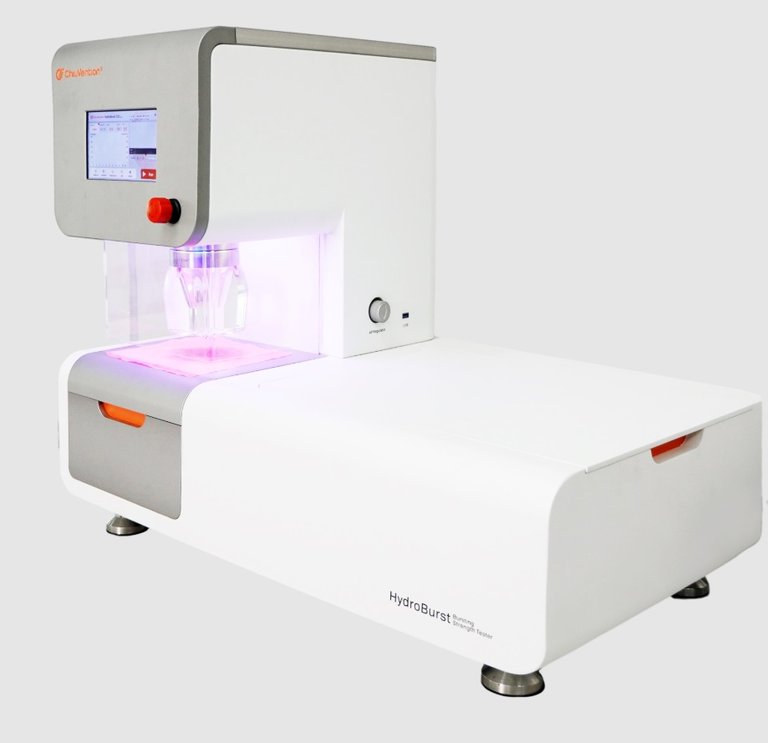
The Mullen Burst Tester is an essential tool for evaluating the durability of materials such as paper, textiles, and corrugated cardboard. As with any precision instrument, regular calibration is critical to maintaining its accuracy and ensuring reliable results. This article will guide you through the steps required to calibrate a burst tester, covering the tools, processes, and standards involved in maintaining your burst testing machine for optimal performance.
Why Calibrate a Mullen Burst Tester?
Calibration is the process of verifying and adjusting a device to ensure it measures within the specified tolerances. For a bursting strength machine, this ensures that pressure readings are accurate and consistent with industry standards. Whether you're focusing on the machine's performance or looking into the bursting strength tester price, calibration plays a critical role in getting the most out of your investment.
Benefits of Calibration:
- Accuracy: Ensures reliable and reproducible test results.
Compliance: Meets industry standards like ASTM D3786, ISO 13938, and TAPPI T403. - Safety: Prevents faulty readings that could compromise material quality.
Cost Savings: Reduces waste caused by incorrect quality assessments.
Tools and Equipment Needed for Calibration
Before starting the calibration process, gather the following tools and materials:
- Calibration Weights or Pressure Gauge: Certified weights or a pressure gauge to validate the machine’s readings.
- Reference Standards: Applicable standards, such as ISO 2759 or ASTM D3786, to guide the calibration procedure.
- Lubricants: For maintaining the moving parts of the bursting strength machine.
Calibration Software (if applicable): For automated or digital burst testing machines. - Tools for Adjustments: Screwdrivers, wrenches, and other tools to adjust the internal components.
- Clean Cloth: To clean the diaphragm and other parts before calibration.
Step-by-Step Calibration Process
1. Preparation
- Turn Off the Machine: Disconnect the burst tester from the power supply to ensure safety.
- Clean the Components: Remove any debris, dust, or residue from the diaphragm and clamps using a clean cloth.
- Inspect the Machine: Check for visible wear or damage to the diaphragm, clamps, and pressure gauge.
2. Check the Diaphragm
- The diaphragm is a crucial component that affects the test results. Ensure it is in good condition, with no cracks or deformities.
- Replace the diaphragm if it shows signs of wear, as a damaged diaphragm can lead to inaccurate readings.
3. Set Up the Calibration Equipment
- Attach the calibration weight or pressure gauge to the machine. Ensure it is securely fastened to prevent any movement during testing.
- If your machine has a digital interface, input the weight or pressure value into the system for reference.
4. Apply Pressure
- Gradually apply pressure using the calibration weight or an external pressure source.
- Observe the pressure readings on the burst testing machine and compare them to the known value from the calibration tool.
5. Adjust the Machine
- If there is a discrepancy between the machine's readings and the calibration tool, adjust the internal settings.
- Use the adjustment screws or software interface to fine-tune the machine until the readings match the reference values.
6. Test Multiple Points
- Repeat the calibration process at different pressure levels to ensure accuracy across the entire range of the burst tester.
- Document each reading to confirm consistency.
7. Verify Compliance with Standards
- Ensure the calibrated machine adheres to the applicable industry standards, such as ISO or ASTM.
- Check the machine’s manual for specific calibration requirements.
8. Finalize and Document
- Once calibration is complete, tighten all screws and secure components.
- Record the calibration results, including the date, technician’s name, and any adjustments made.
- Label the machine with the next due date for calibration.
Calibration Frequency
The frequency of calibration depends on several factors:
- Usage: Machines used frequently should be calibrated more often.
Environment: Machines in high-humidity or dusty environments may require more frequent calibration. - Standards Compliance: Follow the calibration schedule outlined by industry standards or your organization’s quality control policies.
- Manufacturer’s Recommendations: Refer to the burst testing machine manual for specific guidelines.
Typically, calibration is performed:
- Annually for standard usage.
- Biannually or quarterly for heavy-duty applications.
Common Calibration Issues and Solutions
1. Inconsistent Readings
- Cause: Damaged diaphragm or faulty pressure sensor.
- Solution: Replace the diaphragm or sensor and recalibrate.
2. Machine Drift
- Cause: Prolonged use without calibration.
- Solution: Perform calibration and establish a regular schedule.
3. Physical Damage
- Cause: Wear and tear on machine components.
- Solution: Inspect and replace damaged parts before recalibration.
4. Software Errors
- Cause: Outdated or corrupt software.
- Solution: Update the software or reset to factory settings.
Importance of Professional Calibration Services
While routine calibration can often be done in-house, professional services may be required for:
- Advanced Machines: Complex or highly automated burst testing machines.
- Compliance Audits: Ensuring the machine meets regulatory standards.
- Repair Needs: Addressing internal issues beyond the scope of regular maintenance.
Professional services ensure the machine is calibrated accurately and efficiently, minimizing downtime and enhancing reliability.
Conclusion
Calibration is a vital part of maintaining the accuracy and reliability of a bursting strength machine. By following a systematic approach and adhering to industry standards, you can ensure your burst tester provides precise and reproducible results. Regular calibration not only ensures compliance with regulatory requirements but also supports quality control, reduces waste, and enhances customer satisfaction.
For manufacturers and quality control teams, investing time and resources into proper calibration procedures for a burst testing machine pays dividends in the form of consistent and reliable performance. With the right tools, regular maintenance, and professional support, your Mullen Burst Tester can deliver unparalleled accuracy and dependability.
For more details on textile testing methods and machines, contact us:
WhatsApp: +86 180 2511 4082
Tel: +86 769 2329 4842
Fax: +86 769 2329 4860
Email: [email protected]
Website: https://chiuvention.com/